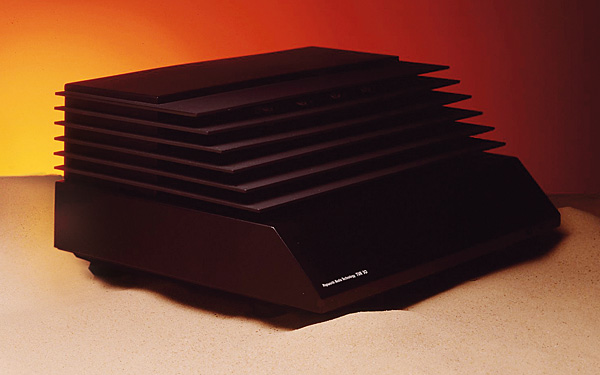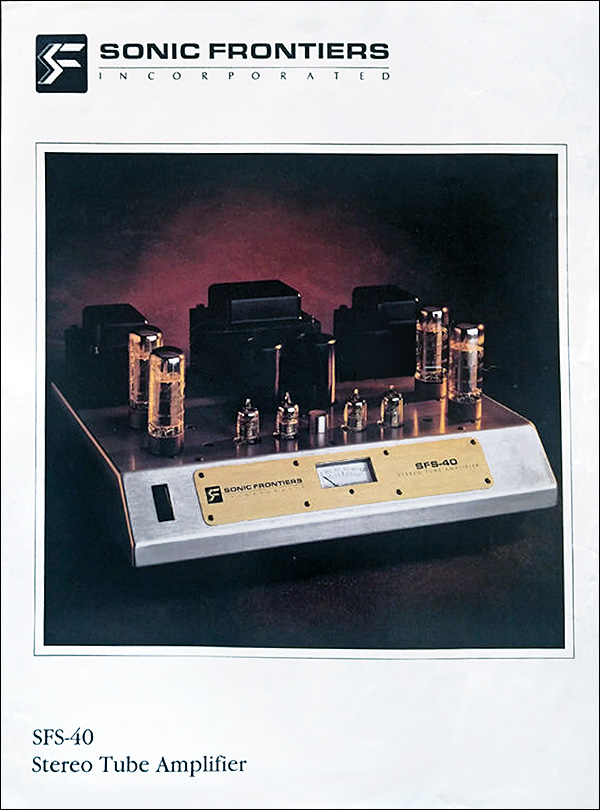Two Tube Winners Page 2
Whatever the commonality of their output tubes may suggest, the two amplifiers were as far apart sonically as they were aesthetically. And they're wearing the wrong clothing. For all its modernity, the TVA 50 leans towards the vintage. Though unlikely to be mistaken for a Radford STA25 or Quad II, it's abundantly warm, rosy and lush.

Fortunately, it's also 'big-sounding', so it didn't compromise the one aspect of the Minima Amator's performance which lifts it into the category of 'remarkable'. The TVA 50 always sounded like a large amplifier, capable of handling powerful material, from marching bands to bombastic heavy metal. Thrash/speed metal proved to be the only material which caused it any grief; the rapid-fire, over-engineered bass runs in the latest Venom 'best of' emerged from the TVA 50 in a muddle, as far from the military precision of Krell bass as you can get. And, as the Sonus faber speaker doesn't lose that much in the lower registers, you can hear it a bit too easily.
This shouldn't worry the romantics, provided that an audition with the Papworth TVA 50 is accompanied by a forgiving attitude. Expect vintage tube sound and you won't be disappointed. Expect to snap, crackle and pop like one of the Kellogg's triplets and you'll leave with a frown. Maybe it's because the amp works sublimely in the midband, with the frequency extremes and absolute transparency relegated to secondary roles.
Puzzle Box
It's the opposite situation for the Sonic Frontiers SFS-40, which emerges as a wolf in sheep's clothing. Forget the archaic presence of tubes, the plain black transformers and the raw steel. This amplifier incorporates all that the loonies have learned to love about image specificity, inner detail, ambience, transparency and control. It is, in fact, one of very few products I've tried this year which has left me puzzled by the contradictions it presents. Which makes the SFS-40 one hell of a party trick.

Open For Business
Let's dismiss its greatest weakness straight away: this is not the gutsiest amplifier I have ever heard, even though sounds will issue forth from Extremas and WATTs when driven by it. But the SFS-40 delivers higher levels before it starts to clip, almost independently of load, so maybe the Minima Amators aren't the ideal match, especially if your room is much larger than 5x4m. Yet it sounds so right, the Sonus faber/Sonic Frontiers combo, that I wonder if the companies' identical initials are mere coincidence.
So 'un-vintage' is the sound of the SFS-40 that I couldn't even compromise the modern levels of transparency when changing to older, well-worn tubes. Regardless of the cables I used (neither amplifier liked pure silver, I hasten to add), regardless of the speaker (within reason), the SFS-40 was always identifiable because of its clarity, speed and openness. And if the TVA 50 sounded big, then the SFS-40 (when used within its power capabilities) sounded gargantuan.
Maybe I was just lucky. Maybe it's because the month had an 'R' in it. Heaven knows I have no special or particular fondness for Sonic Frontiers, and no signals from audio's jungle drums told me to expect miracles. But here I am, faced with the closest thing yet to a Dynaco Stereo 70 for the 1990s. And that's because it doesn't go quite as far as the Dynaco Stereo 70 Mk II in trying to sound like a modern transistor amplifier.

Siren's Song
Modern-sounding or not, the midband of the SFS-40 is still pure tube: liquid and coherent and free of spit. It's a bit thinner than the rich midband of the Papworth TVA 50, another case of new versus old temperament, but not to a point of solid-state anorexia. But this should not imply any added fragility to the sound. While both amplifiers handle delicacy and brute force with similar skill, the Papworth design favours the subtle while the Sonic Frontiers shows no fear of the ponderous. And that's perilously close to describing one as a 'classical' amp and the other as a 'rock 'n' roll' amp, which is something I would rather avoid.
I didn't want this to turn into High Noon. There is no face-off because the amplifiers are such different performers that the duel will be decided within seconds of starting the audition – if the aesthetics haven't already tipped the customer one way or the other. You have to ignore the similarities (four EL34s each, price tags and dimensions and power ratings closerthanthis) and address your own priorities. Me? I'm rapidly outgrowing the vintage tube sound, probably because I need (in occupational terms) to use equipment which reveals rather than obscures. And the SFS-40, though less powerful than the Papworth amp, enables me to hear more of the performance.
The temptation offered by the Papworth TVA 50, though, will prove to be a siren's song to any audiophile who remembers with fondness the last half of the 1970s, when the TVA amplifier was the only real antidote to what I would now characterise as the Linn/Naim madness of the day. It's the very reason why tubes never went away, or why solid-state will never satisfy a certain kind of listener. Those who coveted the granddaddy to this amplifier a dozen years ago but who didn't own a fire extinguisher: your time has come.


















































